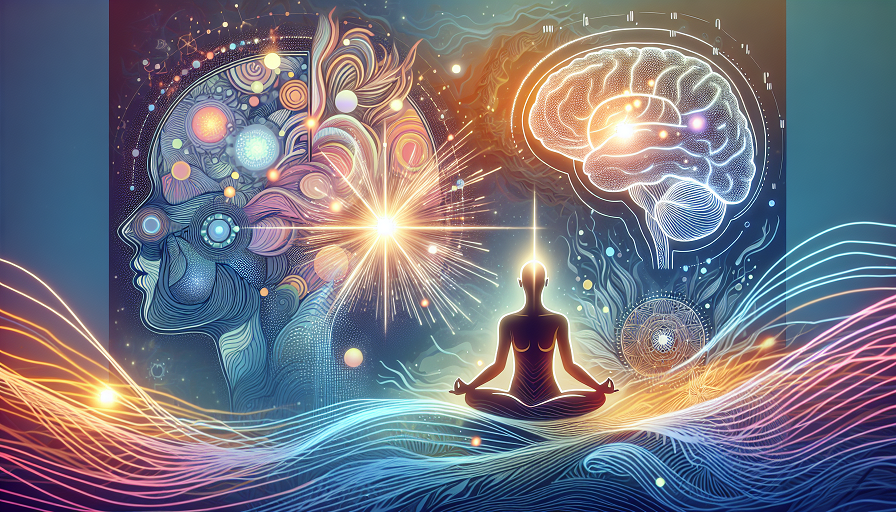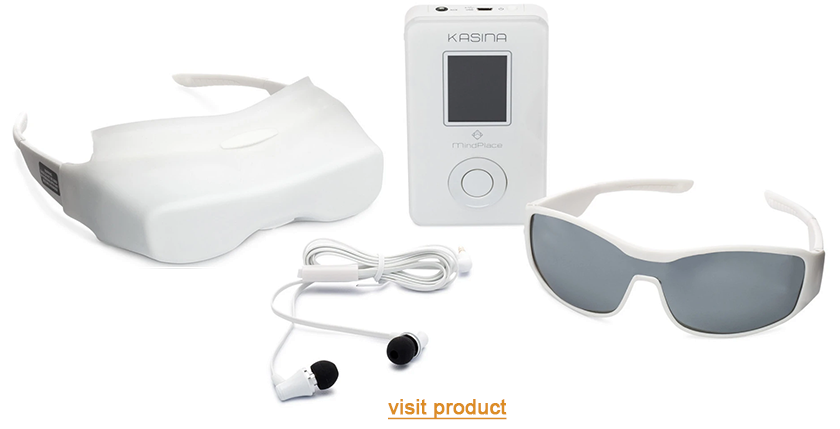
Digital fatigue—it’s that heavy feeling behind your eyes, the fog that creeps in after hours spent staring at a screen. With more of our lives happening online, screen time is hard to avoid. But light therapy, particularly light meditation, offers a way to counteract the impact of screen time. Light meditation is more than just a break from the screen; it’s a method to recharge your mind and restore clarity.
Contents
What is Digital Fatigue?
Digital fatigue is the mental and physical exhaustion that comes from prolonged screen exposure. It often appears as headaches, blurry vision, strained eyes, and a foggy mind. The constant focus on screens means our eyes never really get a break, and the blue light from screens can disrupt sleep and concentration. It’s like running a marathon with your eyes and brain but never reaching the finish line.
Signs of Digital Fatigue
- Eye Strain: The most common symptom, often accompanied by a burning or itching sensation.
- Headaches: Usually caused by prolonged focus on close-up screens.
- Mental Fog: Difficulty focusing or processing information after extensive screen time.
- Sleep Disruption: Blue light affects melatonin production, leading to poor sleep quality.
- Mood Changes: Increased irritability or anxiety after a day on screens.
With digital fatigue affecting so many aspects of our well-being, finding a counterbalance is essential. Light meditation offers a simple, effective solution to combat these symptoms, providing a break for both the eyes and the mind.
How Light Therapy and Light Meditation Work
Light therapy is the practice of using specific wavelengths of light to influence mental and physical health. Light meditation takes this concept further, using rhythmic light patterns to guide the mind into a relaxed, refreshed state. It’s like giving your brain a little “reset” button, creating a space where it can rest and recalibrate.
Brainwave Entrainment and Light Meditation
One key aspect of light meditation is brainwave entrainment. By exposing the brain to rhythmic light pulses, we can encourage it to sync with the pattern, helping the mind shift into different states, like calm or focus. For example, slow, steady pulses can guide the brain toward relaxed alpha waves, while slightly faster pulses support alert, focused beta waves.
This entrainment process helps counter digital fatigue by easing the mind out of its screen-induced fog and into a clearer, more centered state.
The Role of Blue and Red Light
Different colors of light influence the body in unique ways. Blue light from screens can boost alertness but also disrupts sleep if overused. Light therapy devices, on the other hand, use specific blue and red light wavelengths to support health in a balanced way:
- Red Light: Helps promote relaxation and cellular repair, ideal for unwinding after screen time.
- Blue Light: When used intentionally in light therapy, it can boost energy and focus in a balanced way.
Light meditation takes advantage of these colors, allowing you to use them as tools to balance the effects of screen time, rather than overwhelm the senses as screens often do.
Benefits of Light Meditation for Digital Fatigue
Light meditation isn’t just a way to feel relaxed; it actively counters the effects of digital fatigue by helping the body and mind recover. Here are some of the most notable benefits.
Relieves Eye Strain
Our eyes are constantly focusing on screens, and this strain can cause fatigue and discomfort. Light meditation gives the eyes a structured break. The rhythmic light pulses guide the eyes to focus on calming patterns, giving them time to rest and recover from screen-induced strain. It’s like letting your eyes take a breather without having to look away entirely.
Reduces Mental Fog
After hours of screen time, it’s common to feel mentally drained. Light meditation helps by encouraging the brain to enter a relaxed, clear-headed state. By using light to guide the mind out of its screen-induced haze, it’s possible to restore focus and mental clarity, like wiping away the mental smudges from too much screen time.
Improves Mood and Reduces Stress
Digital fatigue doesn’t just impact concentration—it also affects mood. Long hours on screens can lead to irritability and even anxiety. Light meditation promotes a calm, balanced mood by guiding the mind into relaxation. The rhythmic pulses of light offer a gentle anchor for the mind, helping it feel grounded and peaceful, even after a day filled with screens.
Supports Better Sleep
Exposure to blue light from screens disrupts melatonin production, making it harder to fall asleep. Light meditation can counter this effect by using red or soft warm light to promote relaxation and prepare the body for rest. Regular light meditation can help reset the body’s internal clock, improving sleep quality over time.
How to Incorporate Light Meditation into Your Routine
Getting started with light meditation is simple and can be adapted to fit your lifestyle. By setting aside even a few minutes a day, you can enjoy the benefits without major changes to your schedule.
Step-by-Step Guide to Light Meditation
- Choose a Time of Day: Pick a time when you can step away from screens, ideally in the morning or evening. Morning light meditation can help clear the mind, while evening sessions support relaxation.
- Select Your Light Device: Use a light therapy device designed for meditation. Many options offer color choices like blue, red, and green, allowing you to customize the experience based on your needs.
- Focus on Breathing: During the meditation, focus on deep, slow breaths. Let your breathing sync with the light pulses, creating a rhythm that grounds your mind.
- Start with Short Sessions: Begin with 5-10 minutes, then gradually increase the time as you become more comfortable. Even short sessions can provide significant relief from digital fatigue.
With regular practice, light meditation becomes a soothing routine that you’ll look forward to, a chance to reset and recharge, whether you’re at the start or end of your day.
Tips for Maximizing Your Light Meditation Practice
To make the most of light meditation, try these tips that can deepen your experience and provide even greater relief from digital fatigue:
- Combine with Nature Sounds: Adding natural sounds like waves, rain, or forest ambiance can enhance the calming effect, helping you unwind even more fully.
- Experiment with Colors: Different colors offer different benefits. Try blue light for morning alertness, green for balance, and red for evening relaxation to see what works best for you.
- Practice Consistency: Consistency helps the body and mind get the most benefit. Aim for daily sessions, even if they’re brief, to build resilience against digital fatigue.
By experimenting with different combinations and making light meditation a regular part of your routine, you can counter digital fatigue more effectively and create a new sense of balance in your digital life.
Exploring Different Light Meditation Techniques
There’s no one-size-fits-all approach to light meditation, and many techniques can be tailored to suit your goals. Here are a few popular methods you can try:
Guided Light and Sound Meditation
This method combines light meditation with guided audio sessions, often focusing on breathing or visualization techniques. The light pulses create a visual focus, while the guided audio helps anchor your thoughts, making it easier to stay present and relaxed. This is an ideal technique for beginners or anyone seeking a structured way to relax.
Color-Focused Meditation
Color-focused meditation involves using specific colors of light to influence mood and energy. For instance, blue light can help boost alertness, while green encourages balance and calm. Try a color-focused session based on your mood or goals. Experimenting with colors can help you learn which shades support your well-being best.
Mindful Breathing with Light Pulses
In this technique, focus on syncing your breath with the rhythm of the light pulses. This practice is simple but powerful, as it engages both the breath and vision, bringing the mind to a calm, centered state. Mindful breathing with light pulses is great for unwinding after a long screen session or preparing for bed.
Finding the right technique may take a little experimentation, but the journey itself is beneficial. Each approach offers a different way to connect with yourself and recharge from digital fatigue.
Digital fatigue may be unavoidable, but light meditation provides a way to balance the impact of screen time and protect your well-being. By incorporating light meditation into your routine, you’re giving yourself a simple, accessible tool for clarity and calm—just what’s needed in a screen-filled world.

